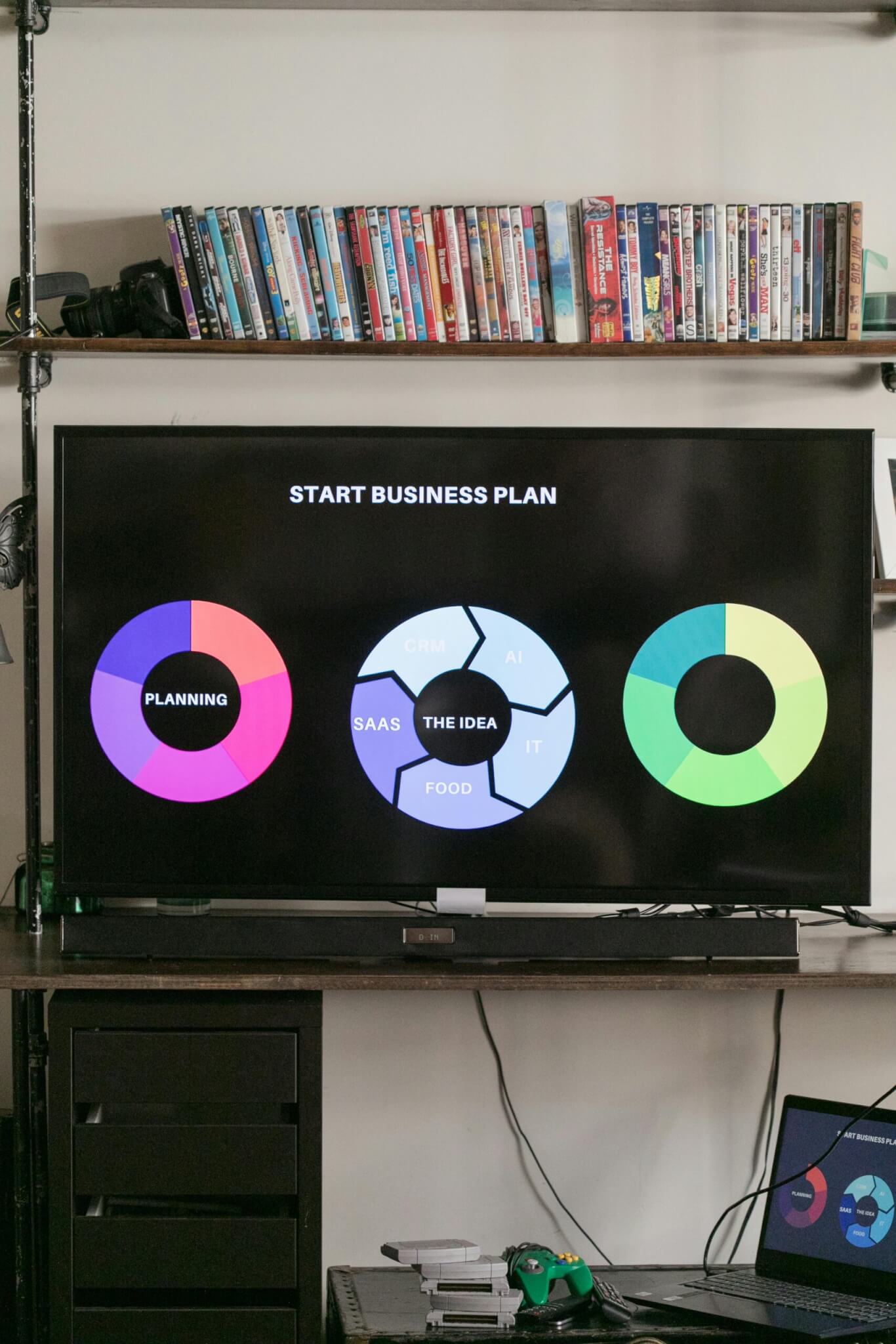What is a Business Contingency Plan? Examples and How to Make One
Unexpected disruptions—like natural disasters, data breaches, or supply chain failures—can threaten a company’s stability. A business contingency plan is a proactive strategy that outlines steps to continue critical operations and minimize disruptions during such events. By assessing potential risks and defining recovery procedures, a well-crafted contingency plan helps protect financial assets, safeguard your reputation, and instill confidence among stakeholders. This guide will walk you through creating a resilient plan to shield your business from setbacks and secure long-term success.
Why is a Business Contingency Plan Important?
A business contingency plan is a vital component of risk management and business continuity. It provides a roadmap for organizations to follow during unforeseen events, enabling them to respond swiftly and efficiently. Here’s why having a well-structured contingency plan is essential:
Minimizes Operational Downtime
Unexpected disruptions, like natural disasters, cyberattacks, or supply chain failures, can severely impact business operations. A robust contingency plan outlines clear procedures to keep critical functions running, minimizing downtime and reducing the impact on productivity and revenue.
Protects Financial Stability
Financial security is crucial for any business. Contingency plans include strategies to manage financial risks, such as emergency funding options and insurance coverage. This proactive approach helps businesses avoid significant losses and maintain cash flow during crises.
Safeguards Your Reputation
A quick and efficient response to emergencies helps preserve your company’s reputation. Businesses that demonstrate preparedness inspire confidence among customers, partners, and investors, ensuring brand integrity even in adverse situations.
Enhances Decision-Making
Crisis situations demand rapid, well-informed decisions. A contingency plan provides a predefined framework, reducing uncertainty and enabling quick action aligned with long-term business goals.
Boosts Employee Confidence
Employees are reassured when they know their organization is prepared for the unexpected. A comprehensive contingency plan fosters a supportive work environment, enhancing morale, loyalty, and overall productivity.
Ensures Legal and Regulatory Compliance
Many industries must comply with legal and regulatory requirements for data protection and business continuity. Contingency plans detail compliance procedures, helping businesses avoid fines and legal consequences while protecting sensitive information.
Encourages Proactive Risk Management
Creating a contingency plan promotes regular risk assessment and proactive management. Identifying and addressing potential vulnerabilities early makes the organization more resilient and prepared for future challenges.
Facilitates Recovery and Continuous Improvement
Contingency plans not only aid in immediate crisis response but also in long-term recovery. They include evaluating the effectiveness of responses and incorporating lessons learned, creating a continuous improvement loop that strengthens future preparedness.
Steps to Create a Business Contingency Plan
Creating a robust business contingency plan involves a structured approach to ensure you are fully prepared for unexpected disruptions. Here’s how to develop an effective plan:
1. Identify Potential Risks
Start by conducting a thorough risk assessment of your business operations. Consider both internal and external risks that could impact your business, such as:
- Natural disasters (e.g., earthquakes, floods)
- Cybersecurity threats
- Supply chain disruptions
- Economic downturns
Engage with employees at all levels to gain a comprehensive understanding of potential threats and ensure that no risk goes unnoticed.
2. Analyze the Impact
Once you’ve identified risks, evaluate the possible impact of each on your business. Assess the following:
- Operational Impact: Which processes would be affected, and how would that hinder business operations?
- Financial Impact: Estimate potential losses in revenue, opportunities, and additional costs.
- Reputation Impact: How could these risks affect your brand image and customer trust?
Use tools like SWOT analysis to gain a deeper understanding of each risk and its potential consequences.
3. Develop Contingency Strategies
Based on your risk assessment, outline strategies to address and mitigate each potential issue. Consider these components:
- Mitigation Plans: Reduce the likelihood or impact of risks (e.g., diversify suppliers to address supply chain vulnerabilities).
- Response Plans: Specific actions to take if a risk materializes (e.g., data recovery procedures for a cyber breach).
- Communication Plans: How and when to inform stakeholders and who will handle communication during a crisis.
Ensure these strategies are practical and consider resource availability during an emergency.
4. Assign Roles and Responsibilities
Define clear roles and responsibilities to ensure efficient execution of the plan:
- Crisis Management Team: Identify key decision-makers who will lead the response efforts.
- Employee Roles: Assign tasks to staff members, ensuring everyone knows their part in executing the plan.
- External Contacts: Maintain a list of external partners (e.g., vendors, emergency services) who can assist during a crisis.
Regular training and simulations will help employees understand their roles and ensure preparedness.
5. Test and Review the Plan
A contingency plan is only effective if tested and reviewed regularly. Conduct simulations to identify weaknesses and make necessary adjustments. Consider the following:
- Frequency of Tests: Schedule regular drills, at least annually, to ensure the plan remains relevant.
- Feedback Mechanism: Collect insights from participants and use them to refine your plan.
Update the plan regularly to reflect new threats, changes in operations, or emerging industry trends.
6. Document and Communicate the Plan
Document your contingency plan comprehensively and distribute it to relevant stakeholders. Make sure the plan is easily accessible in both digital and physical formats. Encourage open communication and feedback from employees to improve understanding and buy-in.
Business Contingency Plan Examples
Understanding real-world applications of contingency plans can provide valuable insights into how to prepare for various scenarios. Here are some enhanced examples with practical advice:
Emergency Response Planning
A strong emergency response plan ensures employees know exactly how to react during crises, minimizing confusion and ensuring safety.
- Fire Evacuation Plan: Map out clear evacuation routes, designate assembly points, and assign evacuation leaders to coordinate efforts. Conducting regular fire evacuation drills is crucial. For example, the National Fire Protection Association (NFPA) highlights the importance of these drills to comply with safety standards and ensure readiness. Businesses can follow guidelines provided by organizations like AlertMedia to effectively plan and execute fire drills.
- Natural Disaster Preparedness: Tailor your plan based on specific geographic risks, like hurricanes in coastal areas or earthquakes in high-risk zones. Businesses in California often secure critical equipment and practice earthquake safety drills. Additionally, companies like Walmart have invested in backup power systems, including generators and renewable energy sources, to prevent operational disruptions during severe weather events, ensuring that stores and distribution centers remain functional and can serve communities in need.
Data Breach and Cybersecurity
Cybersecurity threats are ever-evolving, making it critical to stay prepared.
- Data Backup Systems: Implement automated backup systems that store data securely in multiple locations, including the cloud and offline storage. For example, G&J Pepsi-Cola Bottlers faced a significant ransomware attack but managed to recover within 24 hours. Their rapid response was made possible by having robust, cloud-based backups and a well-executed recovery plan, which allowed them to restore operations without paying the ransom.
- Incident Response Team: Form a team of IT specialists and crisis managers to act immediately upon detecting a breach. Ensure they run simulations regularly to stay prepared. Brian Balzer, the Executive VP of Digital Technology & Business Transformation at G&J Pepsi-Cola Bottlers said, “I cannot stress enough to companies the importance of having such a strong culture where people are willing to jump in and help one another and a leadership team that is supportive of the cyber team, your IT team, whoever it might be, your digital team, to be able to put plans in motion.”
- Communication Strategy: Draft clear, transparent messaging for notifying stakeholders during a crisis, including employees, customers, vendors, and the media. Ensure these messages are concise yet informative, addressing what happened, how it impacts them, and what steps are being taken. Practice handling these communications with mock scenarios to identify potential weaknesses and ensure your team is prepared to respond quickly and effectively when a real crisis occurs.
Supply Chain Disruption
Supply chain disruptions can bring operations to a standstill, so flexibility is key.
- Supplier Diversification: Develop relationships with multiple suppliers for essential materials. For example, a food manufacturing company might work with several farms to ensure a steady supply even during adverse weather conditions. Companies like Cisco have implemented a diversified supply chain strategy by using multiple modes of transportation—air freight for urgent shipments and sea freight for bulk orders—to mitigate disruptions and maintain smooth operations.
- Inventory Management: Maintain safety stock of crucial goods. Retailers like Amazon use predictive analytics to optimize inventory and plan for seasonal fluctuations. For instance, Amazon utilizes predictive analytics to anticipate customer demand, allowing for efficient inventory management and timely restocking. Investing in technology that tracks supply chain vulnerabilities in real time can further enhance inventory management, helping businesses respond swiftly to disruptions and maintain operational continuity.
Financial Resilience
Financial planning ensures your business can weather periods of instability.
- Emergency Funds: Set aside a reserve equivalent to 3-6 months of operating expenses. Companies like Delta Air Lines have credited their ability to survive financial downturns to maintaining a strong cash reserve. This financial cushion allowed them to manage disruptions without sacrificing core operations, as highlighted in their financial resilience and performance reports.
- Expense Prioritization: Categorize expenses into essential and non-essential. During a crisis, cut non-essential costs immediately to preserve cash flow. For instance, during economic downturns, Ford Motor Company reprioritizes its budget, focusing on sustaining manufacturing and R&D while temporarily scaling back marketing expenditures. CEO Jim Farley has emphasized Ford’s focus on cutting costs and improving quality to boost profit margins..
Public Relations and Communications
Effective communication during a crisis can make or break your reputation.
- Crisis Communication Protocols: Establish guidelines for internal and external communications. Assign a spokesperson and create templates for various scenarios. For example, Johnson & Johnson used pre-drafted statements and transparent communication during the Tylenol crisis to restore public trust and set a benchmark for crisis management. Similarly, Starbucks has developed crisis response strategies that include addressing public concerns promptly and training employees on how to handle sensitive situations.
- Media Training for Key Personnel: Train designated representatives to handle media inquiries confidently and convey a calm, reassuring message. Companies like BP have invested heavily in media training for key executives following the Deepwater Horizon oil spill. Their experience highlighted the importance of preparing spokespersons to communicate transparently and effectively during high-stakes situations to manage public perception and rebuild trust.
Case Study: Cantey Technology’s Response to a Fire Incident
In 2013, Cantey Technology faced a critical challenge when a lightning strike ignited a fire in their office building, destroying their on-site network infrastructure. Despite this, the company maintained uninterrupted service for its clients. This resilience was due to their proactive decision to relocate client servers to a remote data center, ensuring continuous operations even when their primary site was compromised.
Key Takeaways:
- Proactive Risk Assessment: Cantey Technology identified the vulnerability of housing all client servers on-site and took steps to mitigate this risk.
- Implementation of Off-Site Backups: By moving servers to a remote data center, they safeguarded critical data and services against physical site disruptions.
- Uninterrupted Client Services: Their comprehensive contingency plan allowed them to continue operations seamlessly, maintaining client trust and satisfaction.
This example underscores the importance of proactive planning and the implementation of robust backup solutions in a business contingency plan.




